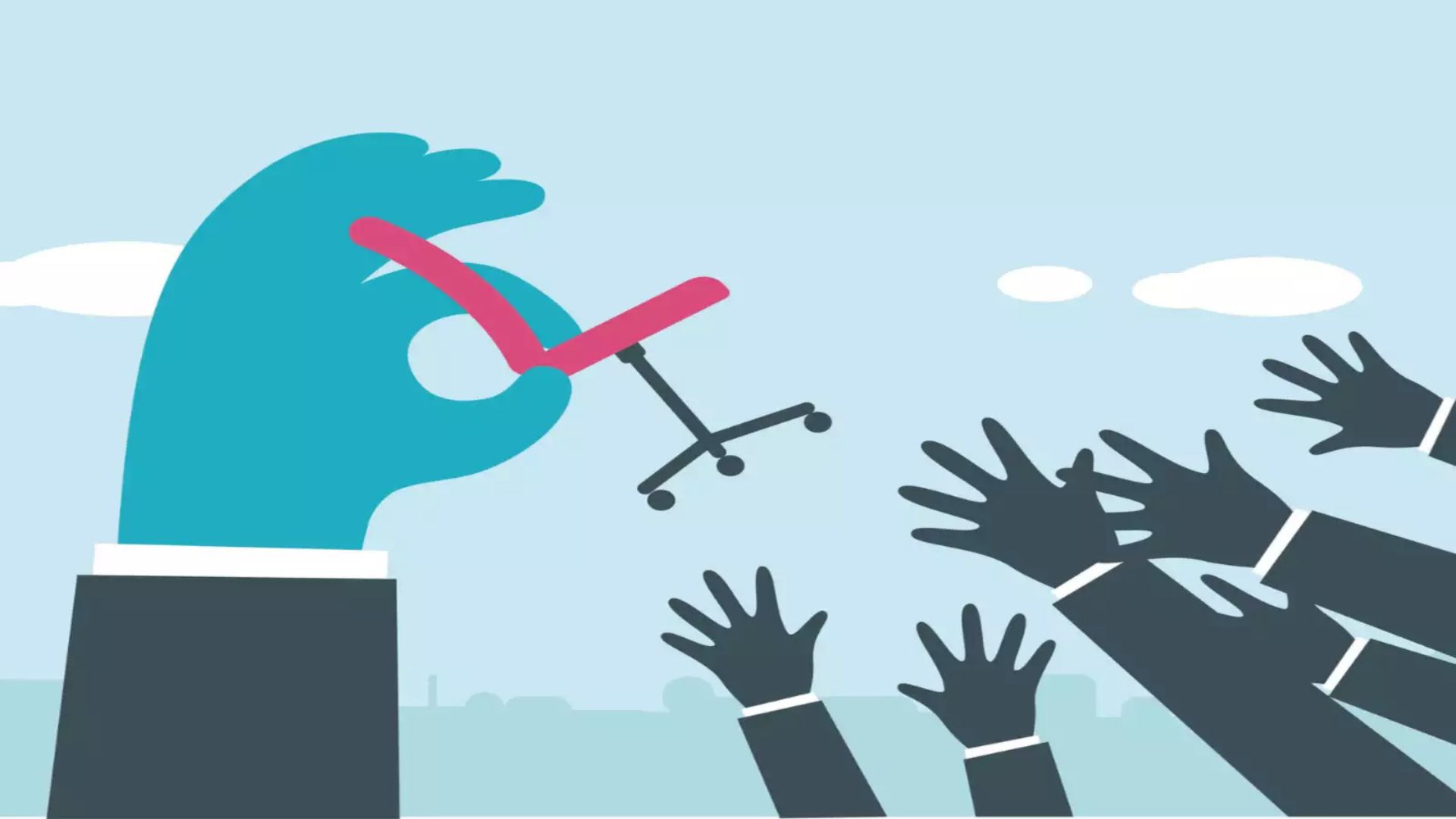
The tragic suicide of Tarun Saxena, a 42-year-old area manager at Bajaj Finance, has sparked a nationwide conversation about the growing pressure at workplaces, particularly in India’s corporate and financial sectors. Tarun’s death, following an intense period of overwork and mental strain from unachievable targets, highlights a disturbing trend in the modern workplace where expectations often surpass human endurance. Saxena’s case is one of several recent incidents, including the suicide of 26-year-old Anna Sebastian Perayil, a chartered accountant at Ernst & Young, both of which shine a light on toxic workplace cultures pushing employees to the brink.
In just ten days, three employees in India have taken their own lives, each leaving behind notes that point to one common cause—unbearable work pressure. As technology drives productivity to new heights, it also demands more from workers, sometimes with deadly consequences.
According to the WHO, burnout is now recognised as an occupational phenomenon. Employees who suffer from it are at a higher risk of mental health issues such as anxiety and depression.
According to the National Crime Records Bureau (NCRB), workplace-related suicides in India have been rising, with 1,362 suicides reported in 2021, a 16% increase from 2020. This alarming trend highlights the mounting pressure employees face, especially in high-stress sectors like finance and IT.
With the rapid rise of technology, the workplace has evolved dramatically. Automation, AI, and digital platforms have reshaped industries, particularly in sectors like BFSI (Banking, Financial Services, and Insurance), where employees are now tasked with not only traditional roles but also managing complex software systems, data analytics, and tech-based operations. While this evolution increases efficiency, it often leads to a blurring of boundaries between work and personal life, especially as digital tools enable employees to stay connected 24/7. This creates a continuous work cycle that leaves little room for mental or physical recovery.
Tech-driven expectations are increasing, especially in sectors like BFSI, IT, and consulting, where performance metrics are tightly linked to sales, target achievement, and client retention. Many employees feel trapped between unrelenting digital surveillance and the constant pressure to deliver results, which can escalate stress levels.
In the tech sector, the “always-on” work culture has become a pervasive issue, significantly contributing to employee stress and burnout. As technology enables constant connectivity, many workers in tech feel pressured to remain available at all hours, leading to a blurred line between work and personal life. This round-the-clock expectation is especially prevalent in roles related to software development, IT services, and product management, where tight deadlines, rapid innovation cycles, and global collaboration add to the strain.
A McKinsey Health Institute survey found that approximately 25% of employees globally experience burnout symptoms, with tech workers particularly affected due to their industry’s demand for long work hours and high performance. The disconnect between employee needs and employer understanding exacerbates the problem, as 22% of workers feel that employers often underestimate the impact on their mental health.
Gartner also highlights that managers are increasingly under pressure to balance employee well-being with corporate productivity in hybrid and remote work environments. They note that low- and mid-level managers feel “squeezed” by competing expectations, adding to the stress levels in tech-driven workplaces.
Companies like Tata Consultancy Services (TCS), Infosys and Wipro are starting to realise that this model is unsustainable, and some are implementing measures like flexible work hours, mandatory time off, and mental health resources. However, more systemic changes are needed to address the root causes of burnout in the tech sector.
This always-on culture not only impacts mental health but also leads to reduced productivity over time, as chronic burnout results in disengagement, higher turnover, and decreased organisational loyalty. Tech companies are beginning to adopt proactive measures such as no-meeting Fridays and encouraging proactive rest rather than reactive breaks after high-stress periods. However, these practices are still not widespread across the industry
According to a Deloitte survey, nearly 77% of professionals reported feeling burnout in their current jobs, and 91% say that unmanageable stress negatively affects the quality of their work. Burnout is recognized by WHO as an occupational phenomenon, highlighting its severe impact on employees.
Among various sectors, BFSI stands out as particularly vulnerable. Companies in this field often operate under intense market pressures to hit financial targets, and employees are held accountable for both personal performance and larger institutional success. Sales roles, in particular, can be gruelling, as employees like Tarun Saxena are expected to meet recovery targets for unpaid EMIs. When these targets aren’t met, employees face threats of salary cuts, public humiliation, and even job loss. This relentless cycle of pressure creates a toxic work environment, often without adequate mental health support.
The tech industry and consulting sectors face similar pressures. Anna Sebastian’s death after just four months at EY illustrates the high demand for constant availability and unmanageable workloads. In tech companies, especially during the pandemic and post-pandemic shifts to remote work, the “always-on” culture has exacerbated employee burnout.
In the BFSI sector, particularly after economic slowdowns or policy changes, customer defaults have become a significant stressor, especially for recovery agents like Tarun Saxena. Non-performing assets (NPAs) — loans that remain unpaid for over 90 days — have historically burdened the Indian banking system. While the Gross NPA (GNPA) ratio in India had reached a peak of over 11% in 2018, it has since declined to about 5% as of 2023, due to increased recovery efforts and credit growth. However, despite this improvement, the pressure to meet recovery targets remains high for employees in roles that involve loan collections.
In cases like Saxena’s, customer defaults during times of economic instability—such as post-pandemic slowdowns—worsen the situation. Sectors that lend heavily to high-risk customers, including retail, agriculture, and MSMEs (Micro, Small, and Medium Enterprises), are particularly affected, contributing to rising NPAs. Employees tasked with managing these recoveries face immense pressure as companies prioritise financial performance over employee well-being.
BFSI employees are often required to meet difficult targets, as defaults on loans directly impact the profitability of the organisation. On average, banks are forced to allocate 25-30% of additional provisions for these NPAs, which directly affects their earnings and lending capacity. The knock-on effect is that employees like Saxena are pressured to recover funds from customers who may be unable to repay, exacerbating stress levels in the workplace.
This pressure is further compounded by the fact that employees in such roles are sometimes held personally accountable for defaults. In Saxena’s case, he was reportedly forced to cover the EMIs that he could not collect from customers. Such practices put an additional financial burden on already stressed employees, pushing them towards extreme measures.
The psychological toll of constantly dealing with non-recoverable loans, alongside the fear of job loss or public humiliation, further escalates the pressure in these roles. Though the RBI and the government have undertaken various steps to address the NPA crisis, such as introducing the Insolvency and Bankruptcy Code (IBC) and the Debt Recovery Tribunals (DRT), the burden on individual employees remains significant.
The RBI’s report on NPAs shows that while the GNPA ratio has improved from 11% in 2018 to 5% in 2023, the pressure to recover unpaid loans remains high. Employees tasked with handling these defaults, especially in BFSI, face immense stress, often leading to severe mental health consequences.
Workplace pressure is mounting not only due to increasing targets but also because of the expectation to be constantly available. Employees are often evaluated not just on results but on how quickly they respond to requests, emails, or clients, which leaves them with little downtime. This can result in severe burnout, a condition that has been linked to various cases of work-related suicides in India and globally. The World Health Organization recognised burnout as an occupational phenomenon, and studies show that individuals experiencing burnout are at a higher risk for mental health issues like depression and anxiety.
The financial burden on employees, like Saxena, who were forced to cover unpaid EMIs, adds another layer of stress. This kind of systemic pressure makes it hard for employees to manage their finances and mental health, further contributing to workplace dissatisfaction and potential crises.
Mental health integration:
Set realistic goals:
In contrast, Sweden and Denmark are known for their strong focus on work-life balance and employee well-being. These countries have implemented structural policies that actively promote a healthy balance between work and personal life, and companies are required to ensure employee well-being as a priority.
Sweden has adopted a 6-hour workday in some sectors while maintaining full-time salaries. The goal is to increase productivity while allowing employees more personal time. Swedish companies like IKEA and Spotify offer generous parental leave, with a focus on ensuring that both parents can take time off without compromising their careers.
Denmark follows a flexible work model known as “flexicurity,” which balances flexibility for employers with security for employees. Workers can adjust their schedules and even take sabbaticals without fear of losing their jobs. Danish law also mandates five weeks of paid vacation annually, ensuring employees have ample time to recharge.
In both countries, mental health is considered an integral part of employee welfare. Denmark offers access to free mental health services, often funded by the state, and encourages open conversations about mental health at work. Sweden provides similar support, with companies integrating wellness programs that focus on stress management and physical health through exercise initiatives and counselling.
As a result, employees in Sweden and Denmark report significantly lower levels of stress and burnout compared to those in countries like India. Denmark consistently ranks as one of the happiest countries globally, with a focus on “hygge”, a cultural concept emphasizing comfort, work-life balance, and well-being.
The comparison underscores that India’s workplace culture while evolving, has yet to fully embrace a balanced approach to work and well-being. Swedish and Danish workplaces show that a focus on flexible hours, mental health support, and personal well-being does not come at the cost of productivity. It can lead to greater engagement, higher retention, and improved long-term performance.
For India to move in this direction, companies would need to implement stronger work-life balance policies, such as flexible hours, remote work options, and mandated mental health programs. Moreover, shifting the focus from purely performance-driven metrics to employee satisfaction and well-being could create more sustainable and productive workplaces in the long run.















